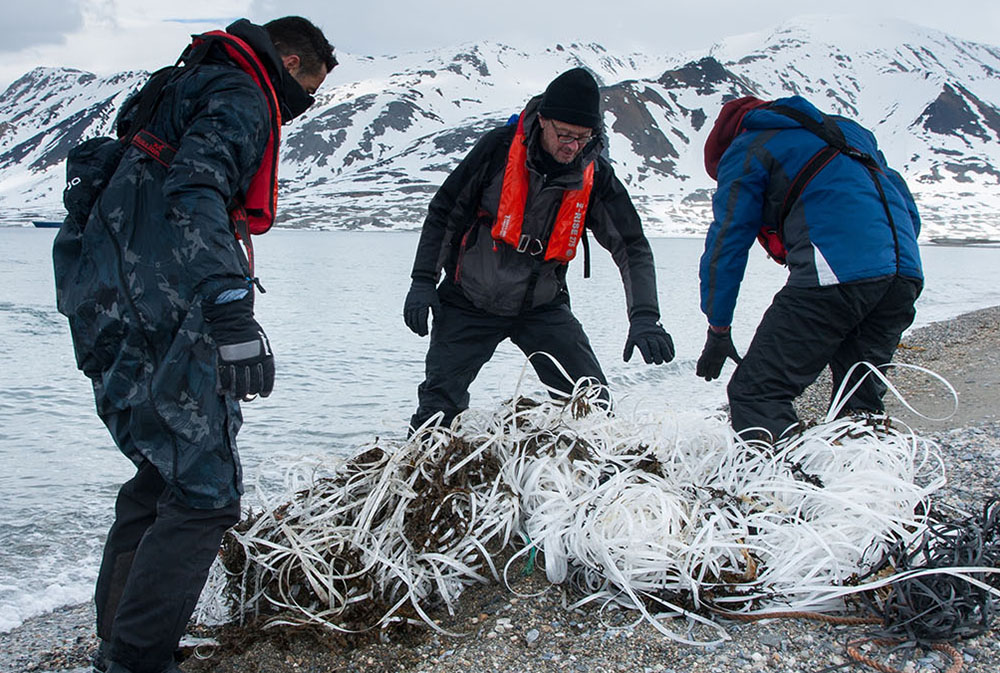What are the origins of the beach litter?
Second part of the Arctic Marine Beach Litter expedition
At this moment, we are sailing on the Ortelius with Oceanwide Expeditions around the northern tip of Spitsbergen. We are on our way to the next monitoring location of this second part of the Arctic Marine Litter expedition. Like the first part of our research trip, we are joining a regular cruise, where we monitor the beaches where passengers go ashore.
Research on the geographic source of marine litter
The first part of our expedition took Eelco Leemans and me to the island of Jan Mayen and Spitsbergen. This time, however, Eelco is not with me. The Norwegian researcher Jannike Falk-Andersson is, who is also doing research into the sources of beach litter on Spitsbergen. She is working at Norut, leading a research project on marine litter in the Arctic.
The last few weeks, Eelco and I analysed the data that was collected on the first part of the expedition. During this analysis, we managed to pinpoint the exact geographic source of three items that we collected at Jan Mayen. We know that litter travels long distances with ocean currents, but this is the first time that litter found at Jan Mayen has been traced back to specific origins.
Litter from Europe and Canada
In our first blog, we discussed the plastic miniature cruise liner that we had found on Jan Mayen, with the word ‘Mauretania’ written underneath. After a google search, we got into contact with a collector of these kinds of ships. He told us that this ship had been a part of a series that was issued in the UK as a gift with packets of Quaker Cornflakes in 1958 (!). Two other items we could trace back to the south of Europe and the Gulf of Maine, Canada. This gives us a sense of how far the litter we are finding in this area may have travelled.
Fishery-related litter such as strapping bands
The last two days, we monitored in Adventfjorden, opposite Longyearbyen and on the north side of Spitsbergen in Liefdefjorden. We again found a lot of fishery-related litter, such as fishing nets, the off-cuts from fishing nets and a lot of so-called strapping bands. A strapping band is very thin, about 2cm wide and woven from a strong plastic material. On board certain fishing vessels, strapping bands are used to keep boxes of frozen fish together when they are stacked together for transportation.

Strapping band found on the beach
The strapping band machines are located below deck. Any loose pieces or large bundles of strapping band that are a by-product of the operation can therefore easily be collected and put into a waste bin. Therefore, any strapping bands found on the beaches of Jan Mayen and Svalbard are likely to have been dumped. Or alternatively have not been secured properly and therefore lost at sea.
The next couple of days, we will continue our journey to the east and south of Svalbard. During this voyage we will visit areas where we have not been before and we are really interested to see what we will encounter. Please watch this space for our latest updates.

